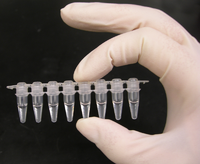
Photo from wikipedia
Esophageal variceal bleeding is a potentially lethal complication of portal hypertension. Endoscopic variceal band ligation (EVL) is the cornerstone of treatment for acute variceal bleeding, as well as its primary… Click to show full abstract
Esophageal variceal bleeding is a potentially lethal complication of portal hypertension. Endoscopic variceal band ligation (EVL) is the cornerstone of treatment for acute variceal bleeding, as well as its primary and secondary prophylaxis. Herein, we present our experience on EVL. Retrospective analysis of all cases subjected to EVL in our department from 01.01.2013 to 30.09.2018. Demographics, epidemiological data, outcomes -including number of sessions required to treat- and complications were recorded. One hundred and seventeen patients (males: 94=80.3%, mean age: 62.2±12.3 years), subjected to 224 sessions of EVL were recorded. The majority were cirrhotic (97.8%), mainly due to viral hepatitis (45.1%) and alcohol abuse (32.5%). Twenty patients (17.1%) had been previously subjected to EVL; fourty-five (39.1%) underwent EVL due to acute variceal bleeding, whereas 43 (36.7%) and 29 (25.2%) for primary and secondary prophylaxis, respectively. Variceal eradication was documented endoscopically in 49.7% of the patients treated with EVL. Performing 2 sessions of EVL showed the best discriminative ability associated with variceal eradication [ΑUC(95%CI)=0.72(0.63-0.82), sensitivity 78%, specificity 72%]. Presence of cirrhosis, indication and endoscopic findings were not associated with success of variceal eradication (p=0.15, p=0.52 and p>0.68), whereas the etiology of cirrhosis was associated with successful eradication, as patients suffering of cirrhosis attributed to viral hepatitis had lower success rates (61% vs. 28.2%, p=0.01). In 14 (25%) patients, varices relapsed after successful eradication. Twelve patients required rescue treatment (9 required TIPS and 3 Sensgstaken-Blakemore tube placement) to control bleeding. Complications related to EVL were documented in 13 (11.1%) patients, 69.2% of which was bleeding from post-EVL ulcers, for which however no further treatment was required. In our series, 2 sessions of EVL are associated with the best therapeutic results with regards to variceal eradication, whilst patients with cirrhosis of viral etiology have lower eradication success rates.
Journal Title: Diseases of the Esophagus
Year Published: 2019
Link to full text (if available)
Share on Social Media: Sign Up to like & get
recommendations!